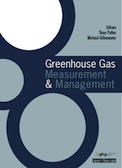
Abstract: Rice agriculture is a large anthropogenic source of atmospheric methane (CH4). The reliable estimation of CH4 emissions requires frequent measurements to trace diurnal and seasonal variations. To evaluate the appropriate intervals and optimal time of day to measure CH4 emissions using the manual closed chamber method, this study analysed four datasets of CH4 fluxes in a Japanese irrigated rice paddy measured at 2-hour intervals using the automated closed chamber method. The typical diurnal variation in the CH4 flux was observed after the rice’s heading stage, during which the daily time-weighted mean CH4 flux was observed twice, in the 08:00–11:59 and 18:00–21:59 time windows. During the flooded rice-growing period, the CH4 emissions, which were estimated by weekly measurements once per day during the 10:00–11:59 time window, corresponded to 93–106% of the emissions calculated using the automated measurement method. In contrast, no regular measurement strategies produced a satisfactory estimate of the CH4 emissions during the non-flooded rice-growing period because of a sharp increase in the CH4 flux just after the drainage. Consequently, the combination of weekly measurements once per day at approximately 10:00 as local mean time for the flooded rice-growing period and daily measurements once per day during the daytime for 1 week after each drainage event is recommended as a strategy to obtain the estimation with a ±10% error.








